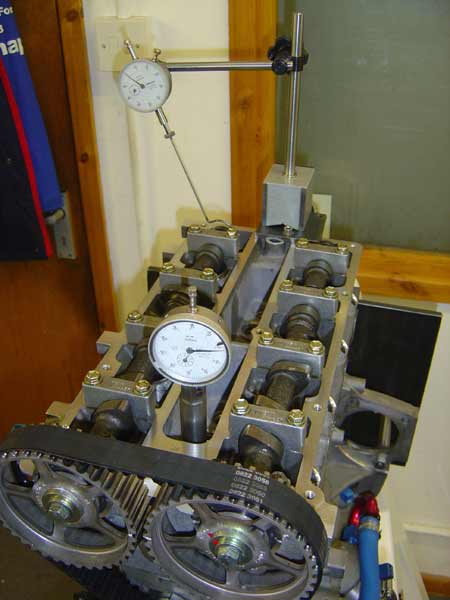Talk to turn
The most glamorous part of any engine development programme is that of establishing the wide-open throttle engine performance. Producing the maximum bmep (brake mean effective pressure) over the usable range of engine speeds, the torque curve can be manipulated to give either out-and-out top-end power or, if driveability is more your concern, a more even distribution of torque over the engine speed range.
One way this engine torque (read bmep) can be manipulated is by altering the camshaft timing - the opening and closing of the intake and exhaust valves to change the gas dynamics. But as we know, bmep is not just about gas dynamics but is the difference between imep, (indicated mean effective pressure) and fmep, friction mean effective pressure. And when it comes to minimising fmep (to maximise your bmep) alongside, perhaps, the friction generated in the ring pack or the aerodynamic windage losses in the sump for example, the torque necessary to power the camshaft must also come under scrutiny. Not quite so glamorous but equally important therefore is the design and development of the valvetrain.
In calculating the power to open a valve, the torque is essentially the product of the eccentricity (the distance from the point of contact of the cam lobe with the follower to the centreline) and the vertical force between the two.
Now, in direct-acting systems the eccentricity of the cam is usually limited to the diameter of the cam bucket since, for reasons of durability, we don't really want the point of contact to run off the side. Invariably there are always exceptions but as a good design principle this is one to hold true, so to minimise the resulting cam drive torques the task is to have either low flank acceleration at high eccentricity or high flank accelerations early in the cam cycle.
The latter approach, however, implies the introduction of high jerk (the rate of change of acceleration) which may or may not introduce other issues. But in opening the intake or exhaust valve against the valve spring, the energy used is mostly recovered when the valve closes again. Thus the torque needed to drive the cam in the opening phase is reflected back into the cam by the valve and spring, producing a torque reversal as perceived back at the cam drive. The difference of course is the friction generated in the system, which is why engine designers go to great lengths to incorporate low-friction DLC-type coatings and the like into their designs. However, these high but short period peak torques and their reversals (sometimes rather more graphically referred to as 'stab' torques) produce not only greater loads into the cam drive but their frequency can also create other issues of resonance well away from the valve.
When designing cams, therefore, not only does the designer need to consider the airflow needed to ingest the desired amount of air, the velocity of the tappet and the accelerations - that is, forces - in the contact zone, but also the degree and magnitude of these 'stab' loads and their possible effect on the rest of the engine.

Fig. 1 - Valvetrain
Written by John Coxon